Minera Lead Mine, Visited with EWJ.
I can't find a LOT of info about this place, but the Minera lead mines date back to before 1296, 1296 is the first written records of the lead mines in this area, when king edward the first ordered the miners to leave the mine and go to devon to work his mines, Not all the work force did leave, and the mines continued to be worked untill the black death of 1349
The mines were worked on and off between then and 1845, but due to lead deposits been found in limestone, the mines were very prone to flooding, so any of the deeper workings had to be constantly pumped, this was a big problem as they started to mine deeper as there was just no equipment that could do it quickly or easyly enough
The man with the solution in the late 18th century was John Wilkinson, entrepreneur and the brains behind Bersham Ironworks. Wilkinson's steam engines were the best yet at keeping the mines free of water. Lead mining was once again profitable. Unfortunately, Wilkinson did not tell Boulton & Watt about his pirated copies of their steam engines. They found out and Wilkinson had to pay up.
Those pumping engines were vital. When problems with the pumps and disputes over paying for the engines led to the pumping stopping, the mines once again closed.
In 1845 John Taylor & Sons, mining agents from Flintshire, formed the Minera Mining Company. They had the experience. They knew Minera's lead mines had potential. They consolidated the mining leases, put in a new drainage level from Nant Mill to get water out of the mines and invested in new engines and a new railway line. In 1852 lead ore was, once again, being mined at Minera.
The miners discovered new reserves of lead deeper underground. It was boom time. The Taylors had started off with £30,000 to invest in their mining venture; the profits for 1864 alone were over £60,000.
The good times continued into the 1870s, but there were problems ahead. The price of lead started to fall, while the price of coal to keep the pumping engines running rose. Reserves of lead were starting to run low. Zinc, the other metal mined at Minera, also fell in price. By the late 1890s, mining at Minera no longer made much economic sense.
In 1909 the mining company decided the pumping engines were too expensive to run. The mines started to flood. In 1914 lead mining stopped. The machinery was sold and the last few miners helped the owners salvage the remains of the business. It was the end of an era for Minera.
---------------------------------------------------------------------------------------------------
We had read a bit about this place and we're of the understanding that it was hard work to get about in here, so we met up early to give us plenty of time to look about.
Now we had GPS and the supposed coordinates, but this turned out to be bollocks, we wasted an hour looking and just couldnt find the way in, a quick look at another set of coordinates (a mile away) and a phone call later and we had found the place. total time, 2 and a half hours..
we rigged up and donned our harnesses and down we went.

The shaft is vertical, about 60ft, and pretty easy to ab down..
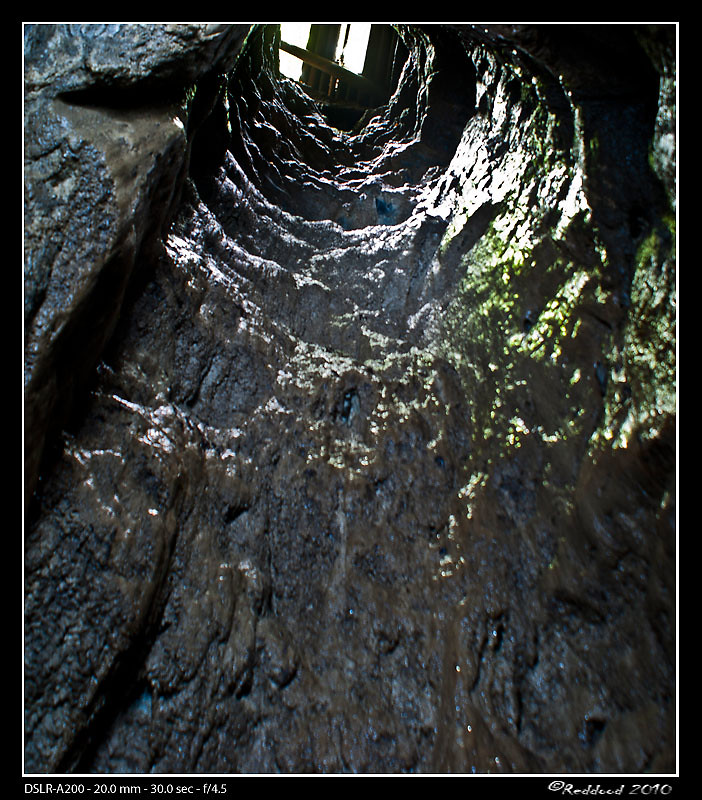
Once we we're in it was obvious this place was old, for starters the workings are fairly shallow, nothing near the 1220 feet of the big shaft at the visiter center (now capped) and it has a real feel of a cave about it, you can easyly tell it is a mine, but the irregularity of it is very strange.
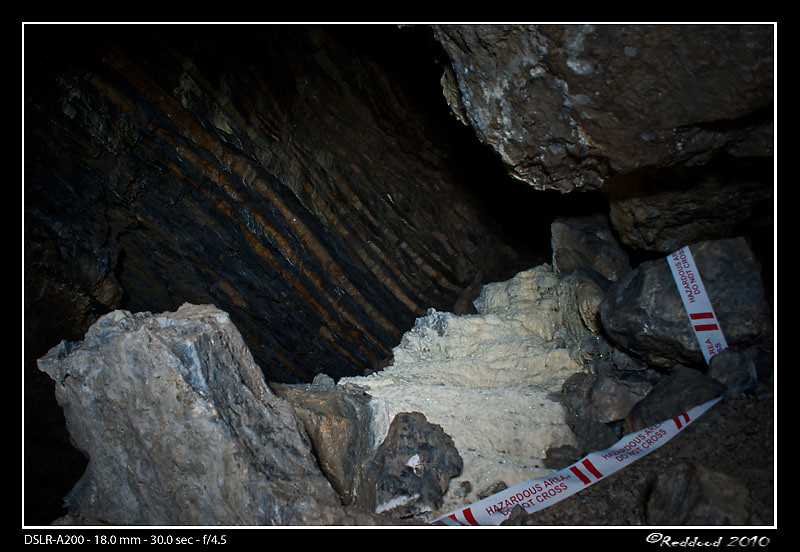
when you drop down this shaft, you come into a chamber, there are 4 ways off it, 2 to the left, and 2 to the right.
we headed off to the right.
The going is slow and hard work, the pasagers range from belly sliding, to craweling to not much bigger. The floor is littered with stone which makes craweling hard on the knees, even with the gell knee pads i had on.
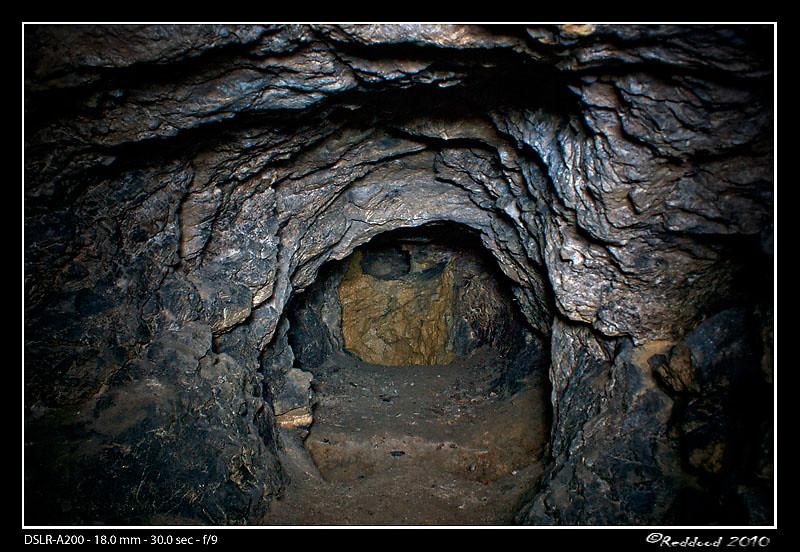
due to it been so hard to get about, the camera didn't come out too often, and the placers where is was high enough to stand, we spent the time resting rarther than taking pictures..
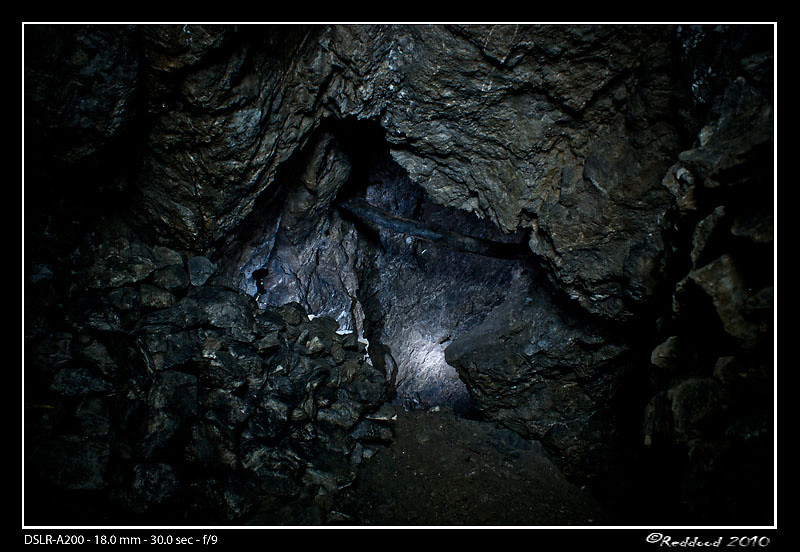
We had a few occasions of EWJ's o2 alarm or gas detector going off, not sure which it was, i just know it wouldn't shut the f*** up, EWJ just said dont worry about it, so i didn't!

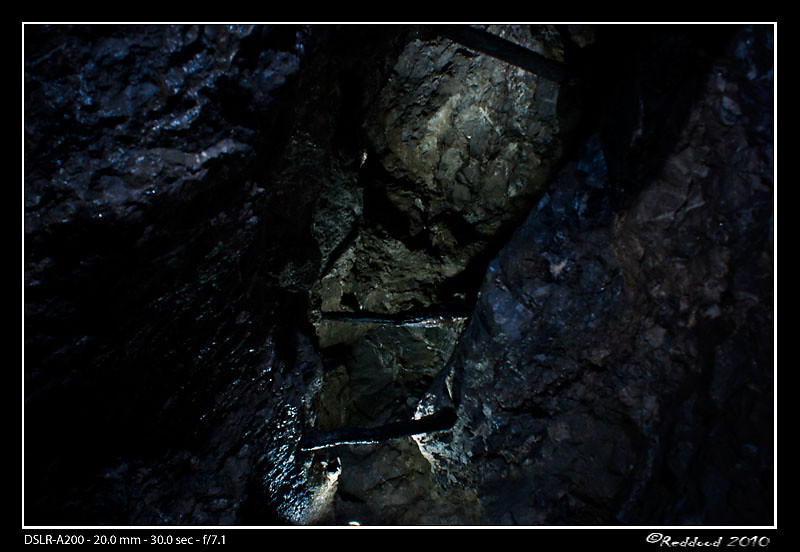
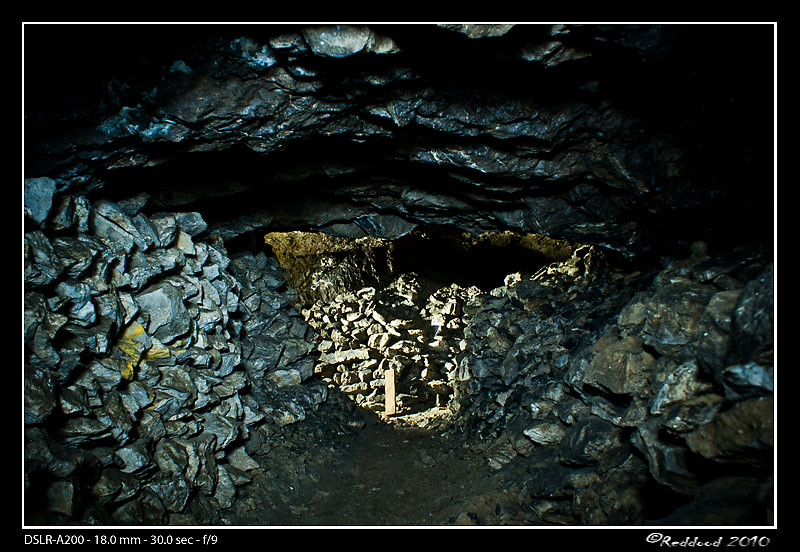
in all, i recon we only did 400 meters in this direction, maybe a little more, but not much! and this took about 2 hours.
we headed back to where we came in, dumped the bags and went off to the left, much easyer to get about without the bags and cameras.
one of the main things we found was a DEEP shaft, maybe 80mtrs, we had a quick look about, then went back to climb out, cos by this point, i had had enough, my knees hurt, my neck hurt, my hands were raw and my shins were bleeding.
clipped onto the rope, ascended out and clapsed onto the wet muddy grass, drank two redbulls and just chilled out for a bit, before dragging the ropes out and unrigging.
All in all i think this place is awesome and i will, without a doubt be going back.
needs a good few visits i recon to see this place, there are tunnels all over the place, maybe even some of them run down to the deep workings of some of the newer mines.
if anyone is planning a trip, YOU NEED KNEE PADS
thanks for looking